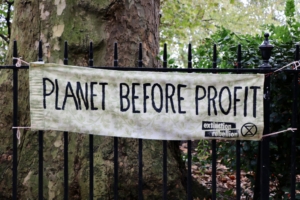You Will Have 78 Days
Here’s What You Need to Know
Labor Day signifies the home stretch to the election, but here at Delve, we are already thinking about what happens next. After the election comes policymaking that will impact a range of businesses and other interests – both in the frenzy of yearend deals and beyond. To help public affairs professionals prepare, this fall TL;DR will focus on the key challenges and opportunities companies and industries will face after the election is over and as the next administration (and Congress) prepares to govern.
To kick off this series, we focus on the 78 days between the 2020 general election and the 2021 presidential inauguration. If the election results are contested or uncertain, the country could be torn apart – and other policymaking put on hold while the results become clearer. There is also likely to be a “lame duck” legislation session with a potential rush of consequential legislation. Plus, the presidential transition – whether to a second Trump term or the new Biden administration – will spark jockeying to shape policy agendas and the personnel appointments that advance and undermine them.
All of these pose risks and opportunities for public affairs professionals, so to maximize your organization’s impact in those 78 days, here’s what you need to know.
Subscribe to Receive Insights
"*" indicates required fields
If You Think the Presidential Campaign Is Contentious Now, Imagine What It Will Be Like if Election Results Are in Doubt
The Never-Ending Election Night?: With historic numbers of mail-in ballots expected in the 2020 general election, some experts warn that it could take “weeks” to decisively determine an election winner, while others are saying that come election night, it may appear that President Trump could have “won,” only for Joe Biden to be declared victor once mail-in votes are all counted. As our nation treads uncertain waters, the distrust in government and the news media will leave a void, and many will turn to more trusted institutions to fill it.
Electoral Uncertainty Could Force Corporate America To Choose Sides. Amidst the chaos of an unclear result, many Americans, or at least the online activists who profess to speak on their behalf, will demand action. With companies far more trusted than government and increasingly comfortable speaking out on social issues, there will be considerable pressure for companies and their CEOs to speak out and take sides on who won, both directly and through signaling partisan alignment on issues like “voting rights” and election integrity. In an age when “silence is violence,” many consumers will expect trusted brands to take a stand, even when it seems illogical to get involved in politics. A failure to act – or at least signal agreement with the most vociferous voices haranguing them – could result in social media backlash, boycotts, and even pain in the stock market.
Companies Should Prepare Now For The Onslaught. This potential scenario means that public affairs professionals will need to prepare business leaders across the country to have an outsized voice in the weeks between the election and when the winner is announced. To do so, it will be crucial to have a thorough understanding of who your stakeholders are – from political and community leaders to policymakers to financial markets to employees and customers – as well as where they are likely to stand in this debate. Shaping your messaging and engaging these stakeholders cannot wait until the uncertainty have arrived. To add more confusion, while planning for such vulnerabilities, public affairs professionals must also consider how they will navigate and engage two possible transition teams – a prospect unseen in twenty years.
What Congress Hasn’t Finished by September Will Be Taken up in the “Lame Duck.” Public Affairs Professionals Need To Be Ready.
Lame Ducks Can Still Hold Surprises: The headlines for the lame duck are likely to focus on a continuing resolution to keep the government funded and other must pass spending bills like the National Defense Authorization Act and the Water Resources Development Act. However, it is what happens below the headlines that can keep public affairs professionals on their toes. The rush to finish legislation before the term ends is ripe for last minute provisions that can catch advocates off guard if they have not properly assessed the landscape and put the right monitoring program in place. Industries must anticipate that policy fights thought vanquished by one side are seen as unfinished by another. With the right Congressional champion, such fights can return in a blink amidst the lame duck deal making.
The Presidential Transition Is Already Underway – Are You Prepared?
As Nominations Replace the Horse Race as Media Obsession, Companies Can Shape The Next Cabinet: It is safe to say that both the Trump Administration and the Biden campaign are already plotting the course for the next presidential term and which allies could fill key executive and judicial posts. When The White House switches party control, cabinet secretaries, including those in seemingly apolitical posts, will always be expected to resign with the notable exception of Secretaries of Defense during active wartime, and even re-elected presidents tend to have considerable post-election turnover. Political prognostication and leaks from campaigns, transition teams and likely administration officials will be ubiquitous. To ensure their interests are protected before nominees are announced, public affairs professionals need a strategy to connect with decision makers backed by thorough vetting of possible nominees and careful monitoring of new developments. Once a nominee is announced, it may be too late to stop them.
Nomination Fights Have Become Professionalized Advocacy Operations – Make Sure You Are Ready to Win: The days when presidents nearly always enjoyed the privilege of appointing whomever they wished for cabinet and judicial positions – absent a glaring character or professional failure – have long since passed. Now, no matter who wins the presidency in November, each of his nominees are likely to face an onslaught of criticism and organized, well-funded efforts to thwart their nomination. Highly connected groups of activists, buttressed by tens of millions of dollars in political funding, stand ready to disrupt hearings, flood Congressional switchboards, and make media plays to get their way. Supportive organizations and their activists will also do their part. Meanwhile, public affairs professionals also have an important role to play in this process. To the Senators considering nominees and the general public watching it all unfold, the voices of respected industry coalitions really do matter, and it can affect perceptions of a nominee as he or she proceeds through the confirmation. Because things happen so quickly, public affairs professionals must be prepared to navigate any potential nominee, as well as anticipate how his or her nomination could go.
Stay Calm in the Mad Dash With the Right Insights
The 78 days between the 2020 general election and the next presidential inauguration will bring Thanksgiving, Hanukkah, Christmas, and New Year celebrations. They’ll also bring a policy mad dash when the “lame duck” session welcomes contentious legislative negotiations and last-minute deadlines, as well as a media frenzy on potential appointments for a new presidential term. In today’s fast-changing political environment, public affairs professionals cannot wait until the election is over to think about what comes next. They must see whatever sits waiting for their organization around the corner, whether it is an opportunity or a challenge. Delve’s insights can help them do so.



